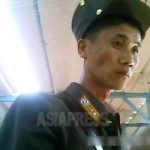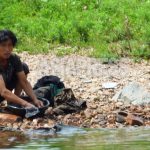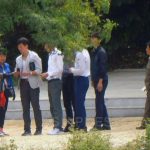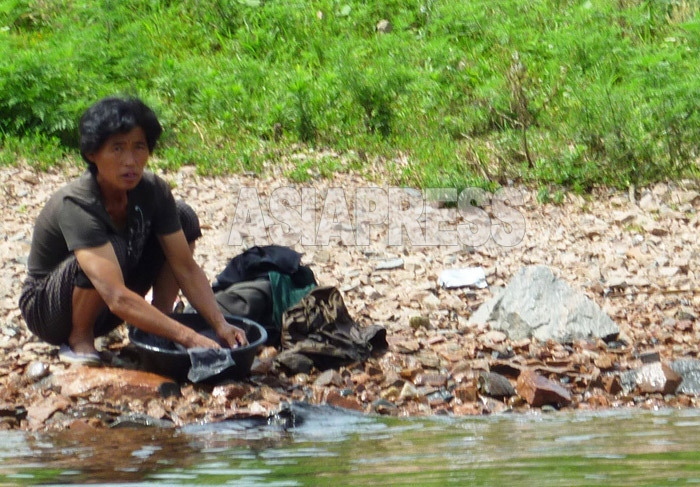
In North Korea, the Kim Jong-un regime's extreme measures against coronavirus have disrupted the economy, worsened the lives of the civilian population, and even led to starvation in some parts of the country. However, the authorities are said to have implemented emergency food distributions in various areas. ASIAPRESS researched 3 cities in North Hamkyung Province and Ryanggang Province from July 12 to 14, with the assistance of our reporting partners within the country (Kang Ji-won / ISHIMARU Jiro).
The results of investigations in each region were almost the same; according to reporting partners, packages of about 5 kg of corn were distributed to registered citizens from around July 8 to July 13. At the Central Committee of the Workers' Party of Korea meeting held in mid-June, Kim Jong-un acknowledged the food crisis and issued an order to "guarantee a stable life for the people." The latest food distribution is believed to be a measure based on that order. A small amount of corn was also distributed at the end of June.
Let's take a look at reports from the various regions.
◆Week-long daily distribution of 750g of food per person
In Musan county, North Hamkyung Province, 7 days’ worth of corn was provided to residents through their workplaces, including the most prominent iron mine in North Korea, the Musan Mine.
In Hyesan City in Ryanggang Province, corn was also distributed through the workplace. However, "There were some differences depending on the place of business. People in a shoe factory received a five-day supply while people in a copper mine received a seven-day supply," said a reporting partner. The same applies to Chongjin City and Hoeryong City in North Hamkyung Province.
The daily ratio in all cities was 750 grams per worker and 450 grams per person for dependents. The rations were not state rations under the system but were distributed for free as a temporary distribution.
In North Korea, the general population's low-cost state food rationing system has collapsed, except in Pyongyang. Some companies provide food at their discretion through in-kind payments instead of salaries, but there is a significant disparity among companies.
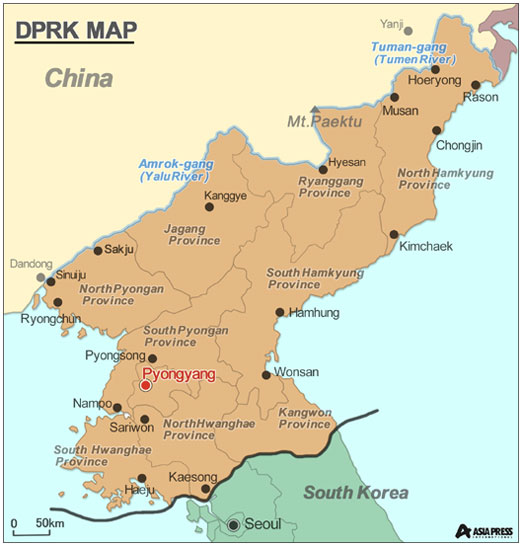
◆How did the residents react? Where is the food coming from?
Even though it is only a 5-7 day supply, the residents are welcoming the temporary distribution. In June, the food prices in the market soared by about twice as much, causing chaos, but the temporary distribution has brought the prices down a little, according to our reporting partners in various areas. In addition, it is reported that Russian flour has recently become available in the market.
So, where did the emergency distribution of food come from? There was some information that the food was meant for the military, but it is not clear. Those who have received the food have told us the following:
"In June, we were told by the authorities to be patient because we would be receiving assistance from China, but the corn we received this time was from domestic sources. It was not the white rice from Warehouse No. 2 (wartime stockpile rice) that was rumoured. It may have been diverted from the 'planned rice'." (North Hamkyung Province)
※Planned rice is the food that the government systematically stockpiles for rationing to civil servants and construction workers.
"Although the authorities had explained to the residents at the end of June that they would provide the residents with 'military rice,' there was no movement at all by the agencies or companies to prepare vehicles and go to the military to receive the rice. I don't think the rice provided this time was 'military rice'." (Hyesan City)
◆Authorities Suffer from Soaring Food Prices
In North Korea, the food prices in the market soared to around double in June, raising concerns among the residents. The authorities then began to crack down on high food prices but the newly wealthy, known as "dongchu," are simply buying up all the food and merchants are not willing to sell at low prices.
The corn distributed this time is only enough for 5 to 7 days, and it will be eaten up soon. So what are the people going to do after that? The authorities are now working hard to control market prices.
"Through the People's Group, the government has informed us that we can buy food at the state-run "Food Market Centers" at a set price that is slightly lower than the market price. However, since the government does not have a lot of stock, the quantity of food for sale will not be enough, and the quality will be lower, so everyone will buy it in the market. Most people are starving because they don't have enough money to buy food, so there is no point in controlling prices anyway," said our reporting partner in Musan County.
In addition, the reporting partner predicts that the severe problem of starvation will continue for the foreseeable future.
※ASIAPRESS contacts its reporting partners in North Korea through smuggled Chinese mobile phones.
- <Inside N. Korea> The Reality and Causes of the Deterioration of the People's Welfare (3) The economy is in a state of panic ISHIMARU Jiro (2021-07-12)
- <Inside N. Korea> The Reality and Causes of the Deterioration of the People's Welfare (2) Kim Regime Prioritizes Maintaining Order. ISHIMARU Jiro (2021-07-09)
- <Inside N. Korea> The Reality and Causes of the Deterioration of the People's Welfare (1) Residents Impoverished by Excessive Coronavirus Quarantine. ISHIMARU Jiro (2021-07-08 )
- <Inside N. Korea>Death Toll Rising: The Serious Humanitarian Crisis in North Korea is a Man-made Disaster. ISHIMARU Jiro (2021-07-05 )
- <Inside N. Korea> Poverty-Induced Civil Unrest Prompts Orders to Strengthen Security Around Military Bases, Police Stations, and Kim Family Statues (2021-06-28 )
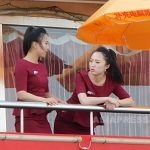
![[Video Report] N.Korea Soldiers selling seaweed at a market](https://www.asiapress.org/rimjin-gang/wp-content/uploads/2018/07/20130819-00010001-asiapk-000-1-view-150x150.jpg)
